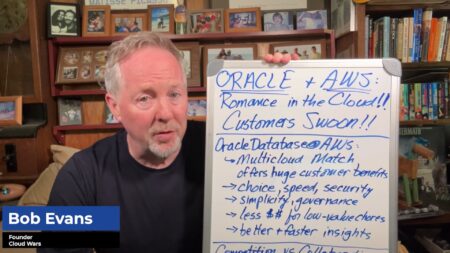Data is the new oil, and, like oil, when used properly, it’s a powerful energy source that can propel your business forward. However, also like oil, data can be complicated and expensive to refine. Nevertheless, that’s something you’ll want to learn to do because in today’s business environment, harnessing the power of data through effective decision-making is necessary for value creation.
The Massive Amounts of Data
Remarkable technology advances have enabled the aggregation of massive amounts of data. Consider the following:
- In 2019, internet users spent the equivalent of 1.2 billion years online (Source: Digital 2019)
- It would take 181 million years to download all the data from the internet (Source: Physics.org)
- 90 percent of all data has been created in the last two years (Source: IBM)
- On average, every human being generated at least 1.7 megabytes of data per second in 2020 (Source: DOMO)
But this massive growth in the volume of data masks an equally massive problem — that the gap between the ability to acquire data and the ability to use data is growing even faster, as evidenced by the following:
- 99.5 percent of collected data never gets used or analyzed (Source: Gartner)
- Less than 50 percent of the structured data collected from the Internet of Things (IoT) is used in decision-making (Source: McKinsey)
Data and Decision-Making
The harsh truth is that, in most organizations, data collection capabilities far outpace the ability to interpret and act on data.
The first complication on the road to using data to make better decisions is that many of us think we are already doing it. We review sales data, market share stats, and web metrics regularly, so the decisions we’re making must be based on data. Right?
Not necessarily.
Many (most?) business leaders still struggle to admit how little data and analysis they use in their day-to-day decision-making. Here’s a simple test. Take the three main performance indicators in every healthy business: (1) growth in new customers; (2) growth in existing customers; and (3) efficiency improvement. Then, ask yourself, “How often do I use this data in my decision-making?” If you answered never or not often, you’re not alone.
We think we use data to make informed decisions. The reality is we use it to rationalize the decisions we make.
Six Tips to Make Data a Competitive Weapon in Decision-Making
Here are six tips, all based on personal experience, that will help you and your company use data as a competitive weapon in critical decision-making.
1. Clarify what you mean by data.
It might seem painfully obvious, but the best place to start is with an assessment of your current data, including how it is being used. In the business information and technology industries, people often talk about “data” when what they’re describing are databases. An email database is the equivalent of a holiday card list, and it degrades quickly. As Gregg Thaler noted “Contact data ages like fish, not wine . . . it gets worse as it gets older, not better.”
As a guide, think about relevancy and recency. The closer to the customer and to real-time, the more valuable your data will be. Provenance matters too. First-party data is optimal. Second-party data might provide additional value. Third-party data should be avoided.
2. Think interest to invoice.
As you start outlining your data architecture, design it to match your customer experience. Ideally, you’d like to be able to capture data from your prospect’s initial interest, to their engagement with marketing or sales, to a quote, order, invoice, and renewal. By capturing and analyzing your customer experience data, you can best serve your customer, more effectively troubleshoot where you’re not delivering value, and optimize your resources and approach.
3. Focus on metrics that matter.
Capturing data isn’t hard today. With cloud-based services, even small-to-medium sized companies can acquire petabytes of real-time data. Figuring out how to turn that data into improved decision-making is the hard part. As an initial step, start with your core business and apply data to the flywheel that drives your business. In other words, carefully track metrics that reflect how your business makes money.
At Thomas, we generated real-time buyer-behavior data, as every second an industrial engineer or procurement professional used the Thomasnet.com platform to source products and suppliers. As we looked to accelerate growth, this data became increasingly valuable in helping us develop better user experiences for buyers and suppliers in the two-sided marketplace that was our core business.
4. What does the data show?
The legendary business management guru Edward Demmings once stated: “In God we trust. All others must bring data.” A shrewd insight from Demmings to be sure, but here’s the problem: This deceptively simple advice is difficult to put into practice. History teaches us that technological change always proceeds with cultural change. Nowhere is this axiom more evident than in the use of data. In the initial stages of trying to use data in critical decision-making, people will continue to work as they always have, making decisions based on their opinions or previous experiences. This cultural and cognitive bias can run deep into organizations and can be difficult to change.
Start the shift by simply asking, “What does the data show?” in every meeting. Put this question on posters around your office, and challenge decisions that weren’t made based on data. Invest in data analytics systems, create dashboards, and provide open access for managers around the company. Work towards embedding data analytics into every aspect of your business. View data-driven decision-making as a horizon goal, something you work towards and continually improve upon, not something you develop quickly and then forget about.
As a leader, you also need to model the behavior you’re looking to establish. You need to be open to what the data shows and embrace the use of data as a core decision-making tool so others in your company will, too. And you need to do so even when the data shows a decision you made was wrong.
5. There’s gold in your data.
As your company becomes more data-driven in decision-making, you will start to see new business opportunities in the data generated by your core business. There might be a totally new business hiding in plain sight in your data. At Thomas, we discovered a new revenue stream based on the digital exhaust of the sourcing data generated on the platform. Real-time data will also show you new features or use cases that will help you keep your core business relevant to users and customers. There is significant value in sharing your data-driven insights with customers and prospects, too; this can help position your company as a thought leader in your category.
6. Resist the need for 100% fidelity.
Charles Babbage, a famous mathematician and the father of computing, once noted, “Errors using inadequate data are much less than those using no data at all.” As you start to work with real-time data, you’ll discover that it’s just that — real-time. Most business leaders have experience working with survey data, which can take months to field, tabulate, and analyze before it can be used. There is an adage in business that if you wait until the trend is obvious, the opportunity will be gone.
You certainly need to consider risk factors as you start working with data, but, at the same time, you should encourage your teams to spot patterns and trends that can be acted on early in a business cycle. My operating philosophy is 75 percent fidelity; meaning we believe that the trend we are spotting in the data is at the 75th percentile before we act. One of the key challenges organizations face in data-driven decision-making is in not clearly differentiating between operating data and financial data. In calling out “resist the need for 100 percent fidelity,” I’m not suggesting that you do not need to have clear and accurate financial management processes and systems in place.
Five Bonus Lessons
In addition to the six tips above, here are five bonus lessons from my own journey to becoming a more data-driven decision-maker.
- Look for sources of data. Be careful of spending all your time looking at data results and not enough time focusing upstream on available data sources.
- Lead by example. If you aren’t using data to make decisions, no one else in your company will, either.
- Correlation is not causation. It’s easy to assume causation when analyzing data, when in many/most cases what you’re seeing is a correlation.
- Read constantly. Data science is evolving rapidly. Keeping up to speed is a huge challenge, but reading and developing frameworks for understanding and interpreting data will help. Two books I’d highly recommend; The Book of Why: The New Science of Cause and Effect by Judea Pearl and Dana Mackenzie and Noise: A Flaw in Human Judgement by Daniel Kahneman.
- Think big. Start small. Don’t be afraid to take the first steps. Start with a small data project and see where it takes you. Don’t let fear or the need to have “perfect” data stop you.
Want more tech insights for the top execs? Visit the Leadership channel:










